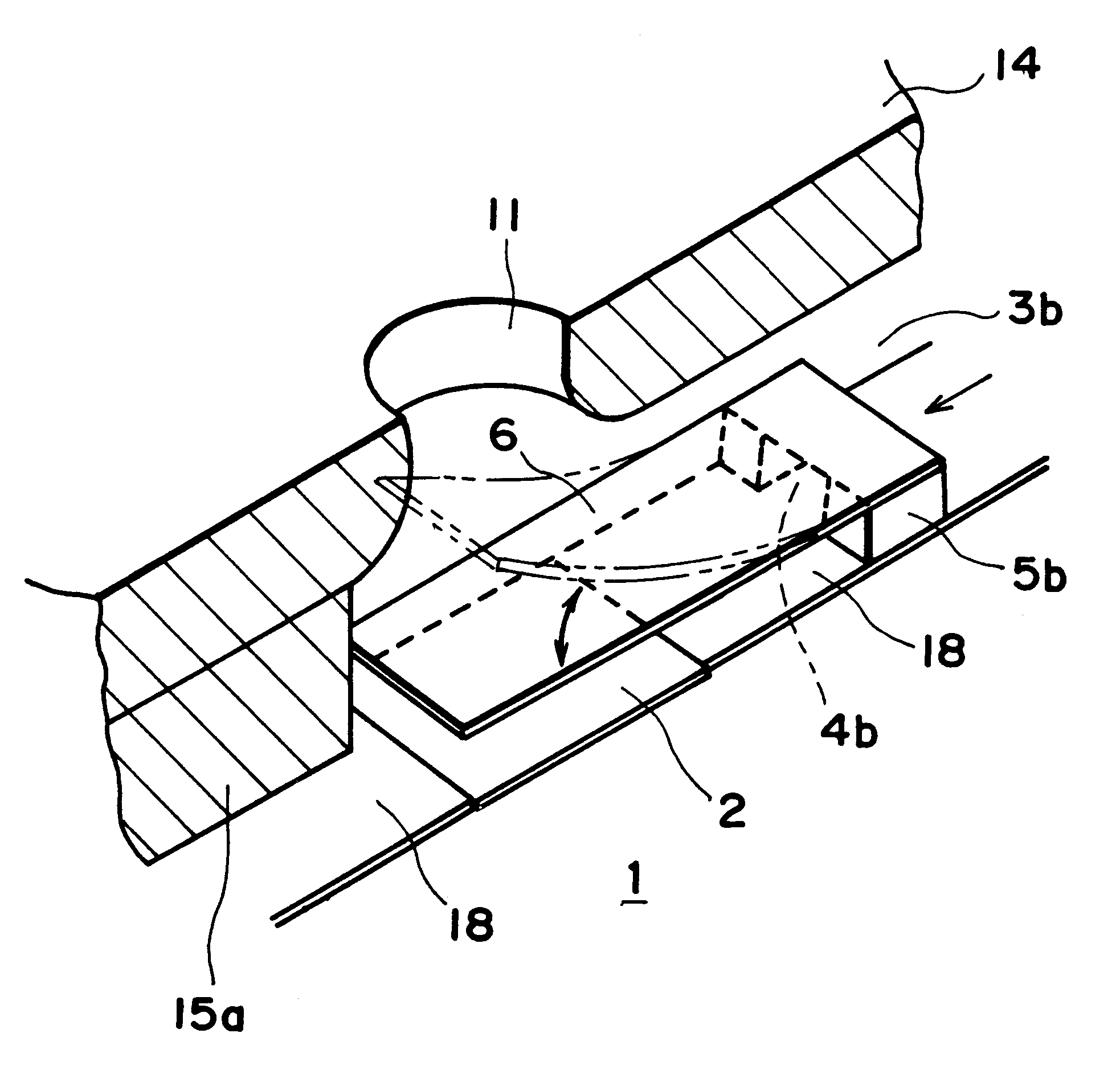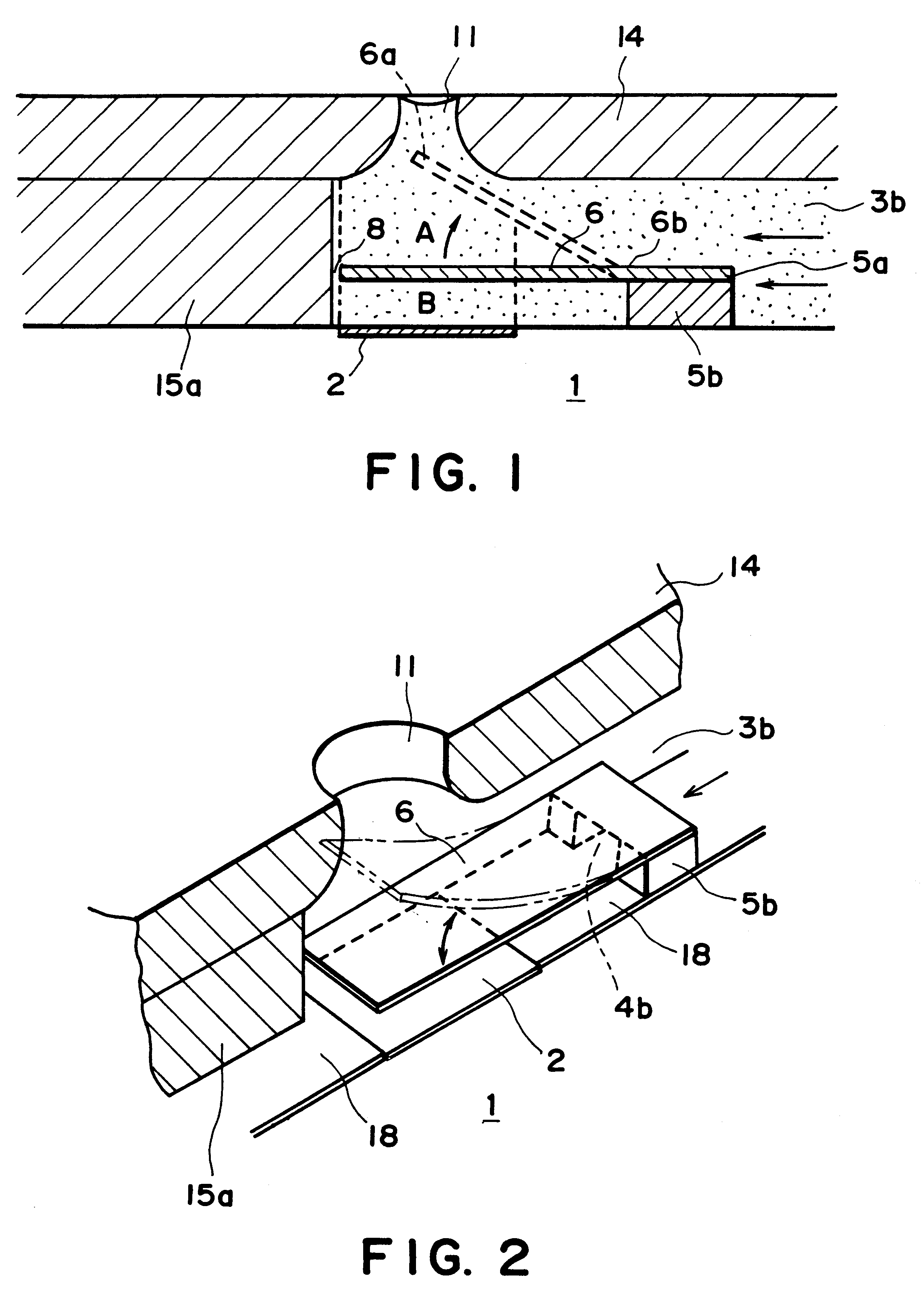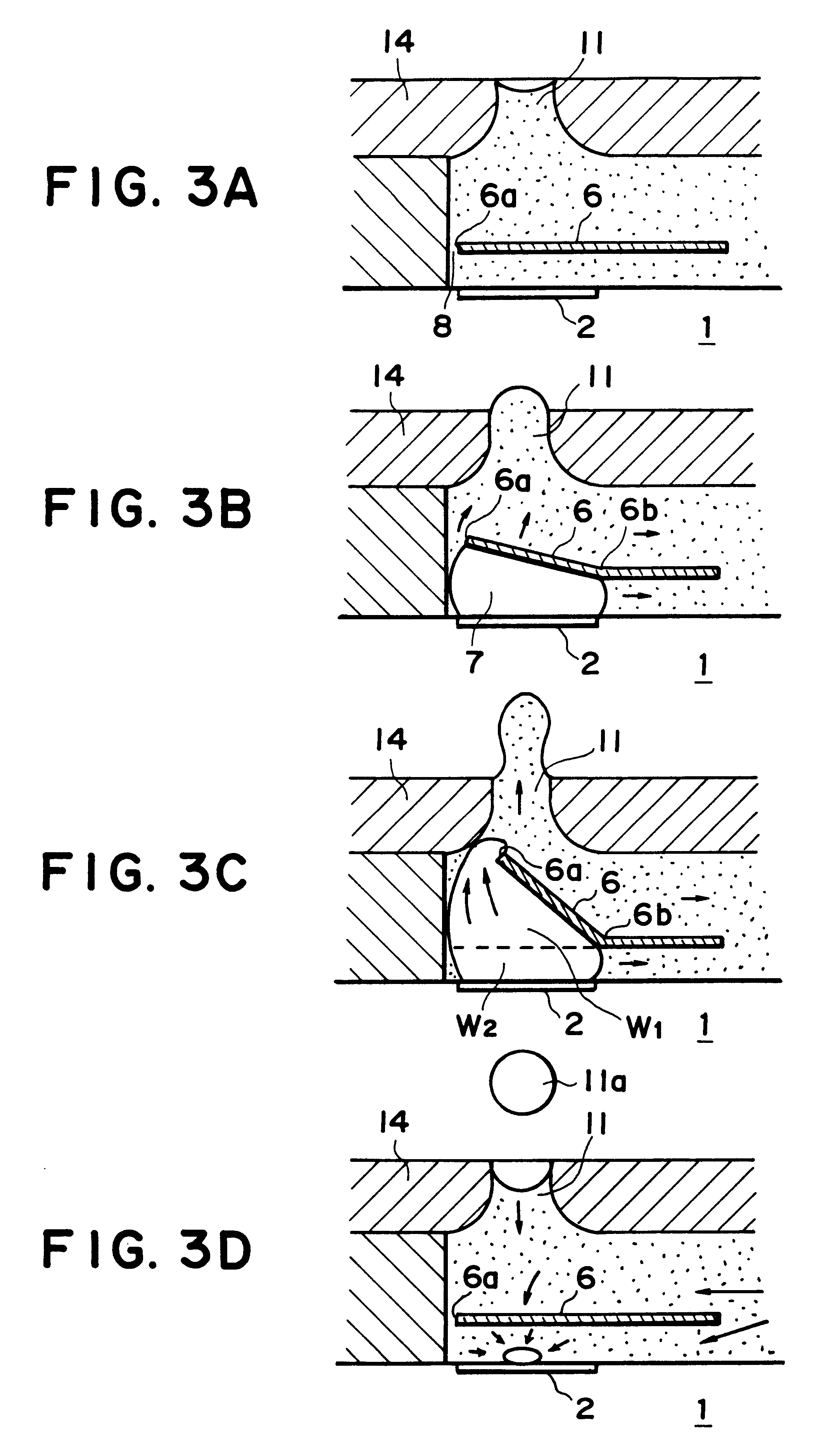Liquid ejection head with a heat generating surface that is substantially flush and/or smoothly continuous with a surface upstream thereto
a heat generating surface and liquid ejection technology, which is applied in printing and other directions, can solve the problems of deteriorating energy use efficiency and ejection force, large amount of deposition, and unstable ink ejection
- Summary
- Abstract
- Description
- Claims
- Application Information
AI Technical Summary
Problems solved by technology
Method used
Image
Examples
example 2
(Head Example 2)
FIG. 18 is a schematic perspective view of a liquid ejecting head according to an embodiment of the present invention. The 1 of this embodiment is different from the foregoing head is in that the movable portion 6 is an independent member rather than a pair. The defect 15d having the flow passage wall 15 functions as an opposing member. In this embodiment, a liquid ejecting head with the high ejection power and high ejection efficiency, is provided.
(Movable Portion and Separation Wall)
FIG. 19A-FIG. 19C are schematic top plan views of liquid ejecting heads having a movable portions according to further embodiments. FIG. 19A shows an example, wherein the movable portion 6 of the separation wall 5 is rectangular. FIG. 19B shows an example, wherein the movable member is rectangular with narrowed base portion 6b functioning as the fulcrum upon the displacement or deflection. FIG. 19C shows an example, wherein the movable member is rectangular with wider base portion 6b fu...
first embodiment
FIGS. 24A-24E are schematic sectional drawings depicting the steps of the liquid ejection head manufacturing method in the present invention.
Referring to FIG. 24A, the electrothermal transducer comprising a heating member 2 composed of hafnium boride, tantalum nitride, and the like is formed on the element substrate 1, that is, an individually plotted section of a silicon wafer, using manufacturing apparatuses similar to those employed for the semiconductor manufacturing process. Then, the surface of the element substrate 1 is cleansed to improve its adhesiveness to the photosensitive resin which is involved in the following step. In order to further improve the adhesiveness, the properties of the element substrate surface are modified with a combination of ultraviolet rays and ozone, or the like combination, and then is spin coated with, for example, a 1 wt. % ethyl alcohol solution of silane coupler A189 (product of NIPPON UNICA).
Next, referring to FIG. 24B, a dry film Odyl SY-318...
second embodiment
FIGS. 26A-26D are schematic sectional drawings depicting the steps of the liquid ejection head manufacturing method in the present invention.
Referring to FIG. 26A, in this embodiment, a 15 .mu.m thick resist 101 is placed on a stainless steel (SUS) substrate 100, in the pattern of the second liquid flow path.
Next, referring to FIG. 26B, a nickel layer is grown on the exposed surface of the SUS substrate 100 by plating, to a thickness of 15 .mu.m, the same thickness as the thickness of the resist 101. As for the plating solution, a mixture of sulfamic acid nickel, stress reducing agent Zero Ohru (product of World Metal Inc.), boric acid, anti-pitting agent NP APS (product of World Metal Inc.), and nickel chloride, is used. As for the means for applying an electric field, an electrode is attached to the anode side, and the SUS substrate 21 on which pattering has been completed is attached to the cathode side. The temperature of the plating solution and the current density are kept at ...
PUM
 Login to View More
Login to View More Abstract
Description
Claims
Application Information
 Login to View More
Login to View More - R&D
- Intellectual Property
- Life Sciences
- Materials
- Tech Scout
- Unparalleled Data Quality
- Higher Quality Content
- 60% Fewer Hallucinations
Browse by: Latest US Patents, China's latest patents, Technical Efficacy Thesaurus, Application Domain, Technology Topic, Popular Technical Reports.
© 2025 PatSnap. All rights reserved.Legal|Privacy policy|Modern Slavery Act Transparency Statement|Sitemap|About US| Contact US: help@patsnap.com



